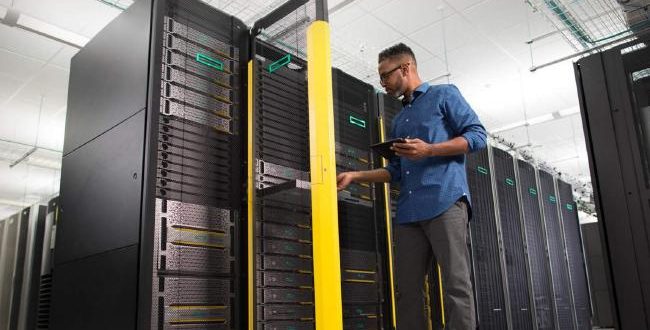In the digital era, speed is everything. Consumers expect instantaneous access to services from any device and any location, and even the slightest delays can lead to unsatisfactory experiences.
Faced with such high expectations, it is no wonder that many organisations are rethinking the decisions they make regarding investment in the backend technology that powers those customer experiences.
And so one of the traditionally least-sexy components of technology infrastructure — storage — has suddenly been thrust into the spotlight.
For HPE, that has translated to increasing interest in its all-flash 3PAR storage solutions. Unlike traditional disk-based storage, which uses mechanical technologies to write and read data, all-flash storage is entirely chip-based, and performs at speeds comparable to the RAM storage in traditional computers — but at much larger scale.
According to HPE’s chief technology officer for data centre and hybrid cloud technologies, Paul Haverfield, the Achilles Heel of a hard disk storage system is the so-called ‘random read’ function.
“You physically have to move a piece of metal across a magnetic surface, and you have to wait for it to settle, and then you have to read the data off and transfer it,” Haverfield says. “And that physical seek-time is typically in the order of 10 milliseconds. Whereas on flash storage, that random read operation is effectively instantaneous, in the nanoseconds.”
While all-flash storage arrays have traditionally been more expensive than disk-based alternatives, decreasing costs and other factors are swinging the equation in their favour.
“Over 18 months, any all-flash storage system will beat an all-hard disk system on total cost of ownership, because of the decreased energy usage, cooling costs, and maintenance costs, and human labour productivity improvements,” Haverfield says.
However, it is not the cost of flash, but what it enables, that he believes is winning over customers.
“In online applications like online retail purchasing, if customers are made to wait a few seconds, they typically are going to think twice about coming back again,” Haverfield says. “And as soon as searches or checkout operations start to take 30 or 40 seconds, then there is a very high correlation with drop-offs and cancelled transactions.
“What flash storage does in the backend data centre infrastructure is deliver a very consistent, predictable experience to the customers.”
Haverfield says all-flash storage also enables entirely new models of service delivery. He says just as it would be impossible to run modern business systems using the older technology of tape-based storage, we may soon feel the same way about disk-based systems.
“What flash does is provides new capabilities in storage performance that previously have never been possible or practical, so it is an innovation enabler in terms of opening up new workloads and new business opportunities,” Haverfield says. “It opens up huge realms of possibilities with real-time business analytics and predictive insights.”
Another benefit of all-flash storage was made abundantly clear during the recent WannaCry ransomware attacks that crippled many organisations around the world.
Haverfield says the time and effort required to run backups using disk-based storage has led to backup routines where data is copied and stored on a daily or even weekly basis — at the cost of days of disruption or lost data in the event of a successful attack or other outage.
However, the speed with which data can be written to all-flash drives enables an alternative form of backup known, as snapshotting, whereby changes to a dataset are recorded every 10 or 15 minutes.
“Snapshot technology places additional work on the storage array, that can basically bring a disk-based array to its knees, making it not practical to deploy on mass scale,” Haverfield says.
“Flash storage totally changes all that. Because flash storage gives you virtually limitless random read capability on your data, you are able to take snapshots much more frequently on a much broader dataset, with much higher volumes of data.”
Hence should an organisation be attacked or hit by ransomware, it has access to a series of checkpoints going back in time every 10 or 15 minutes, making it easy and quick to recover to the most recent ‘clean’ copy.
Haverfield says when organisations factor in the cost of an outage or data loss — in terms of lost productivity, recovery time and damage to market credibility — the cost advantages of all-flash technology become apparent.
“You have new threats these day that didn’t exist a few years ago,” Haverfield says. “And you have new technology that helps you mitigate against those threats or risks in a more cost-effective manner. So with this newer technology you are able to achieve better levels of risk mitigation for less outlay.”
The Australian’s editorial staff were not involved with the production of this content.
This content was produced on behalf of HP — Enterprise. Read our policy on commercial content here.





